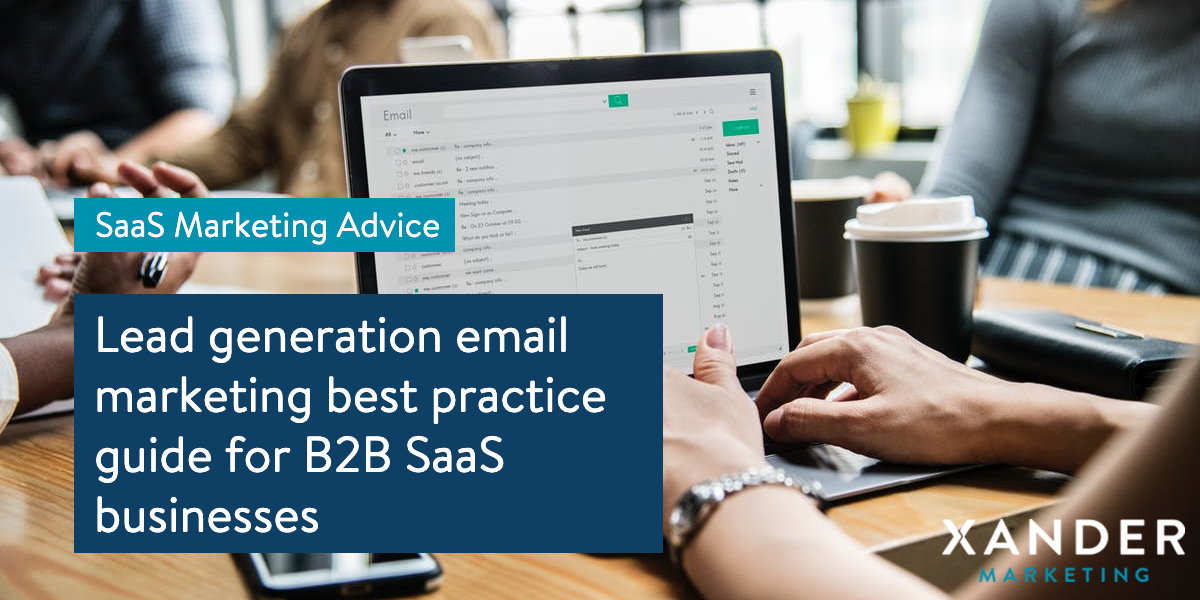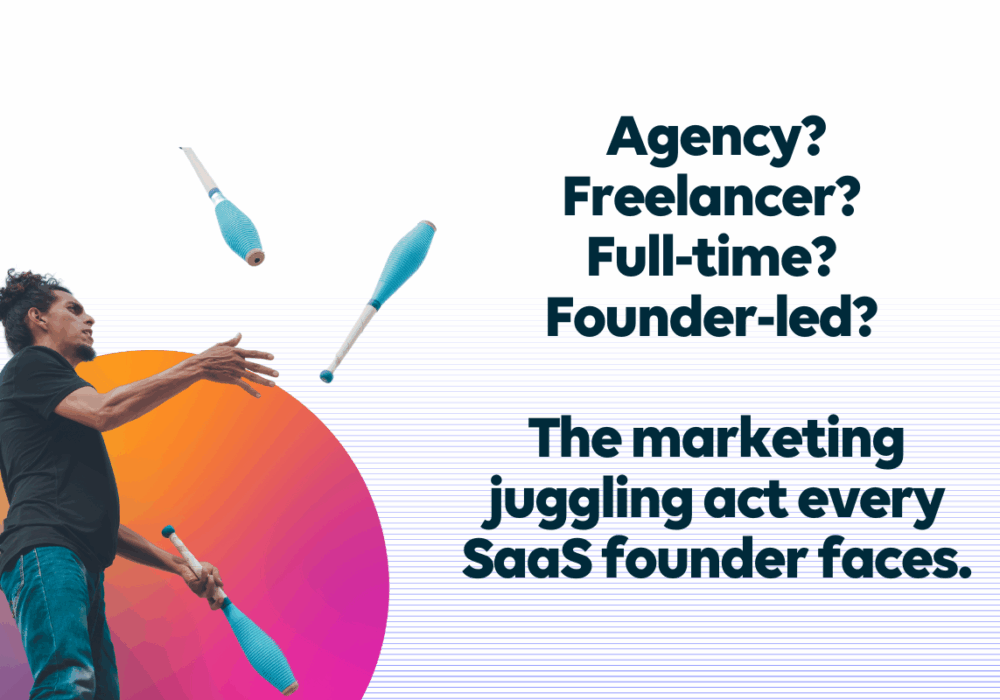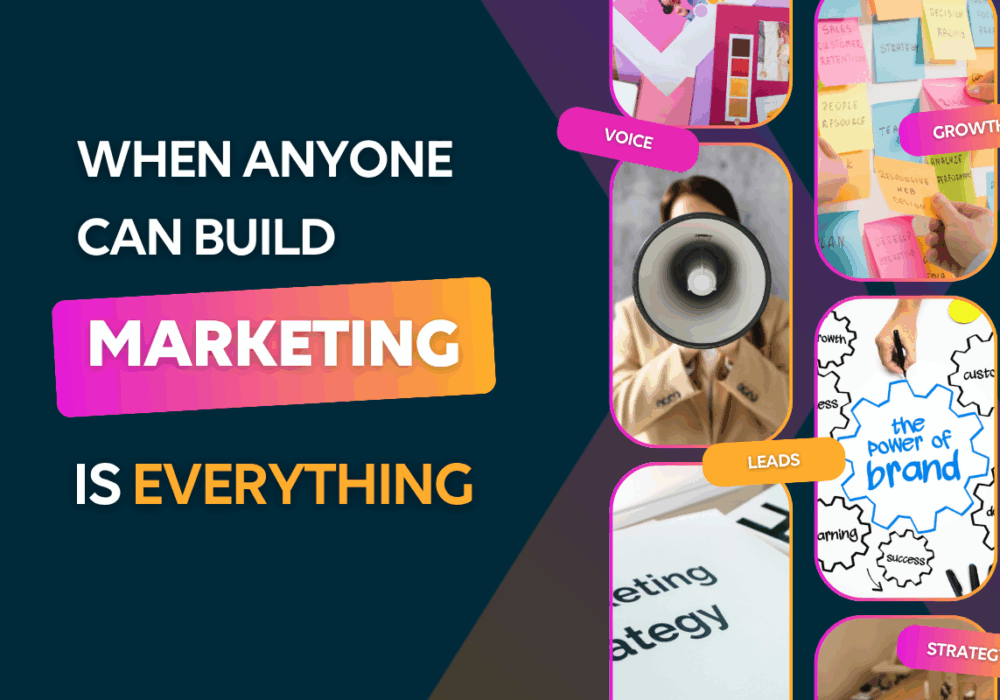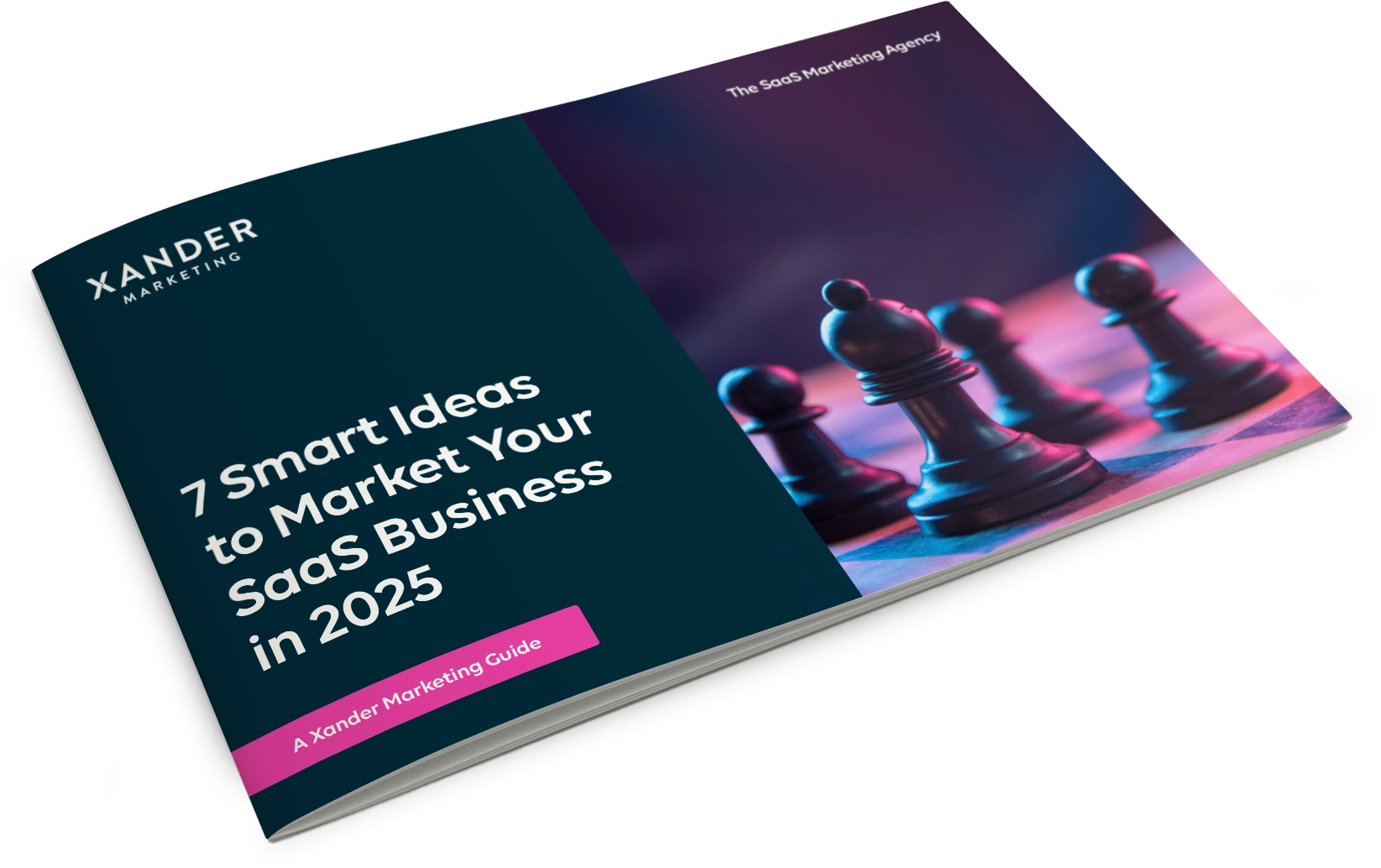Lead generation email marketing best practice guide for B2B SaaS businesses
20th July 2019
SaaS email marketing best practice
Whilst email marketing for SaaS has the potential to be highly efficient, delivering campaigns to your prospects and results back to your business more rapidly than traditional offline marketing, it is often done ineffectively but SaaS businesses. This impacts campaign performance and ultimately undermines the value that the marketing budget returns to your business.
Email marketing offers the chance to hit your prospects where it matters most – right in the business Inbox. Importantly it is easy to determine the value of email marketing because its effectiveness is readily measured.
This guide focuses on the best practice ‘what’, ‘why’ and ‘how’ of lead generation B2B email marketing for SaaS companies. Here we offer advice to help successfully implement strategies and make email marketing more effective and efficient by showing how to:
- Make sure your email is read and not deleted without being opened
- Ensure that the right people read your email
- Entice the reader into responding to your call to action
Need help with your generating leads for your SaaS business through email marketing? Talk to us today. Find out more about our email marketing services or book your free marketing consultation.
What is it?
Email marketing generates sales leads by measuring the responses of email recipients. Understanding who has interacted with the email and how much interaction has taken place establishes the relative interest of each recipient in the subject line and content of the email.
Anyone that interacts may be termed a lead. The most basic interaction level, an ‘Opener’ is the coolest lead. The more a recipient interacts with a campaign, (the number of ‘Clicks’) the greater the interest and the hotter the lead.
It is the measurement and analysis provided by marketing systems that enables marketers to assess the success and determine the value of email marketing activity.
How does it work?
SaaS email marketing software enable marketers to manage email campaigns to many thousands of recipients in a few mouse clicks. Such systems have the ability to collect information on interactions with a campaign.
The primary statistics identify who has:
- Opened the email (the ‘Open Rate’)
- Responded to a call to action to click a link within the email (the ‘Click Rate’)
Recipients that click links may trigger actions such as direct download of information or visits to web pages where there may be a number of further elements with which to interact via clicking or entering information. Marketing systems may measure all of these interactions as well.
Why is it essential?
Cost of offline V. Cost of online
The key form of offline direct marketing activity for comparison here is Direct Mail, or DM. The cost base of DM is generally composed of creative costs (design and copywriting) and production costs (artwork, paper and printing). There may also be storage and transport considerations as well as stationery (envelopes), delivery (bulk mail or postage) and marketing personnel salaries. Specialist fulfilment houses offer services that may simplify and reduce the costs through economy of scale.
The costs of email marketing usually consist of creative, software – the marketing system – and marketing personnel costs. Once again external agencies offer email marketing fulfilment services. Both DM and email marketing require a data list. This may be a bought list, a list compiled from customer/contact data activity or a combination.
More cost effective
For both the costs of creative should be the same; however the cost calculation shifts significantly once we consider the consumable elements. Email marketing has no directly comparable consumable costs. Email marketing systems use templates to provide graphics and branding, and once created, a template can be used time and again.
Many email marketing systems are online products and have no purchase cost. There may be a monthly subscription for some. However the most straightforwardly priced ones base monthly charges on the volume of email that is sent or size of database. There may be costs for template production or training, but these are one-off or as required rather than recurring.
With monthly costs for some systems of between £50 and £200 for 10,000 emails, it is extremely cost effective to get your message out with email marketing when compared with DM. However it is not in cost alone that email offers benefits.
Email’s killer advantages
Besides reducing the operational costs of marketing activity, as a consequence of its feedback mechanism that measures and analyses opens and clicks, email marketing delivers priceless value-adds that enable your marketing function to return greater value to the business.
- Direct insight into the effectiveness of each marketing campaign: Determine the real value of this marketing activity to the business
- Ability to profile and segment those you engage and to whom you sell: Better understand your target audience
- Acquire email addresses of likely prospects: Use the profile of those to whom you successfully sell to identify others
- Long-term, strategic development of customer and prospect data: Integrate and exchange marketing data with your CRM system
- Unrivalled speed and reach with a few clicks: Pull campaigns together, revise and reach large numbers quickly and simply:
- Size is not a barrier to entry: Minimise your costs whether you are a start-up, small, medium or large business:
- Integrate, focus and improve the efficiency of other marketing activities: Only undertake telemarketing to prospects ‘warmed’ through email or to those that express a preference for DM
How to carry out email marketing for your SaaS
What are the best types of emails to send out and why?
The philosophy behind SaaS B2B lead generation email marketing is to offer recipients information that is of value as a means to winning trust and establishing thought leadership. Typical information types are white papers, business or market guides and links to videos. If people show an interest in information given by you they are more likely to be receptive to other opportunities to interact, such as a phone call. What makes this technique particularly appealing is its unobtrusive nature and ability to cultivate better open and click through rates over time. Experience shows that this approach is more successful than other types of email marketing; this is the method considered in this guide.
Getting started
Identify your target market
To make any broadcast more effective it is advisable to decide on and collect data for one or more segments of your market; segments can be divided up according to company size, location, employee numbers, job title or any other requirements that your company may have.
Consider whether you need to obtain a data list
Although your company may already have compiled data lists (the names of people to be targeted in marketing campaigns), it may be that your current data records are out of date, of uncertain provenance or irrelevant. Or it may be that you want to generate more leads. In any of these cases it is necessary for you to buy a new data list of potential customers in your target market.
Choose an email marketing system
Email marketing software is a tool for managing campaign design and delivery, tracking responses (open and click metrics) and analysis. Crucially, at this stage it is very important to establish the features and benefits that best meet the needs of your business.
Campaign creation
Now that you’ve established your email marketing platform it’s time to create your campaigns. This involves creating effective subject lines and email copy.
Why effective subject lines
It is vital to understand the importance of your subject line. This is the first piece of information that grabs the recipient’s attention. It’s make or break; any subject line that does not deliver the spark of interest that compels the recipient to open the message is inviting the campaign to underperform.
How to create effective subject lines
- Focus on the advantages gained from reading your email: It must stand out as a good use of time in a busy Inbox
- Be concise as this will be more likely to grab the attention of your recipient: A limit of 50 characters (including spaces) helps avoid waffle
- Put the most crucial information in the first few words: Recipients quickly read these before deciding whether to read your email
- Personalise: Recipients are more likely to open personalised communications
- Split test your best subject lines by sending each subject line to half of the data set: Use the subject line with the higher response rates for future campaigns
- Excite the reader: Try using words like’ discover’, ‘ explore’ and ‘find out’
How to create effective content
Now you have a great subject line you need copy in the email body to match. To make your copy effective try to tick off the recommendations on this list:
- Write a plain text email: Plain text emails are thought to be more effective than HTML emails containing graphics and branding when sent to cold prospects
- Write and address the email in the style of an email sent to a colleague: Somewhere between formal and informal, professional yet friendly try opening ‘Hi John’
- Focus on knowledge rather than making a sale: Sales narratives can set ‘spam’ alarms ringing
- Discuss your customer’s business problems and create a solution: Demonstrate understanding of problems and give them free information
- Try to use only one call to action: Although more than one link can be used, too many can make an email look ‘spammy’ or dilute the message
- Sign off emails with ‘Kind regards’ or ‘Regards’: Don’t forget business name, web address and contact details
- Allow recipients to opt out of the campaign: Provide links in the email that enable recipients to decline further campaigns
- The sender should be a real person: Would you open an email from ‘email Blast Server’?
- Test send the email to yourself: This allows you to check the presentation, delivery and spam issues
- Test send the email to a colleague: Sense check subject line effectiveness, readability of the copy, and the number and placement calls to action and link functionality
Broadcasting a campaign
- Launch campaigns using email marketing software: Remember, ‘Read Receipts’ and ‘BCC’ in Microsoft Outlook are no substitute for the, management, analysis and reporting features of a good marketing system!
- Find the best day and time for your business to send an email out
| Warning: Email marketing is not right for every recipient |
| For some recipients on a mailing list unsolicited emails can be a bit like Marmite – they’ll either love it or hate it. Many people enjoy receiving and reading information sent to them; some though may construe it as spam. Others, however, may be indifferent.
If readers perceive your email to be spam this not only results in email not being read but may also potentially promote a negative view of your company. The pros and cons of email marketing should be weighed up. Although some people may have negative reactions to email marketing communications, on the other hand it can provide you with the leads you need. Many businesses adopt the approach that ‘it can’t please all of the people all of the time.’ |
Reporting
What can you expect to get from marketing system reporting?
Email marketing systems record the actions of each recipient in response to emails. The base statistical data reported by email marketing systems is:
- Emails Sent: The number of emails sent from the system; this is defined by the number of contacts in the data list
- Emails Delivered and Undelivered: The number of emails delivered and those that could not be delivered to the specified email addresses
- The ‘Open Rate’ (‘Opens’): Real time email opens provide instant insight into whether the right recipients are being targeted and the effectiveness of email subject lines
- The ‘Click Rate’ (‘Clicks’): Real time link clicks indicate the effectiveness of copy and functionality of linked calls to action
For a single campaign, the number of Clicks determines the level of interest of each recipient. Over time, the responses gained from regular, well planned and conceived broadcast activity allows behaviour to be analysed with respect to:
- Subject lines
- Calls to action
- Long versus short email copy
- Prose only email copy versus prose and bulleted email copy
- Personalised subject lines versus impersonalised
- Linking surveys or other forms allows you to enrich prospect and customer data by asking direct questions such as level of purchasing responsibility (e.g. Decision maker or Influencer)
One critical B2B SaaS email marketing best practice is testing. Testing lets you compare the performance of variables. Undertaken in conjunction with testing, aggregation and analysis across the entire data reveals how to best design and structure the content of email communications.
What questions can I answer by building custom reports?
All marketing systems vary in their reporting capabilities. Be certain that you understand what can be delivered from ones that you shortlist. Examples of the sort of intelligence reporting can deliver include:
- Are my leads useful, influential and prosperous?
- Are my recipients likely to be receptive to future campaigns?
- Can I segment leads based on levels of interest?
- Shall I warm call the list of subscribers?
- Or would it be more affective to send them direct mail?
- Alternatively would it be better to refer the list of subscribers to the website using an email and/or landing page?
| How you ensure your email gets through spam filters |
| Resist the temptation to make offers in your subject lines.
Avoid words like ‘free’, ‘win’, ‘cheap’, ‘cost’ and ‘sales’ as these will hit spam filters, bypassing your prospects’ Inboxes completely. Pre-test campaign emails to see if they get picked up by spam filters, get blocked by ISPs or put on anti-spam ‘blacklists’ that are recorded against your domain. |
Data
Data houses and list brokers
Although your business may have gathered its own list of contacts and email addresses (data) it might be worthwhile obtaining additional data to expand it. Of course prospects must be relevant to your offers and services. Working closely with a data house you can specify precise criteria for your data.
Obtaining data segmented by factors such as industry, location, job title, turnover and the number of employees, not only helps your selection and targeting of recipients, but it also allows you to send different emails to different segments of your data.
An example data profile might look like this:
- UK workers in the marketing industry in companies with 20+ employees turning over more that £3m PA.
Buyer Beware: How to spot good quality data from bad
There are some key things to remember when purchasing data. Collectively, these define data quality.
How was the data acquired?
Always ensure that any data list you use has been derived legally and ethically and is fit for the purpose for which you intend to use it.
- Has the data been bought from a disgruntled ex-employee of a competitor?
- Have those on the data list granted permission to receive relevant marketing emails?
- Have they been mislead in the process of gaining permission?
- When the data records were last verified?
- What is the data house’s policy for inaccurate data?
Most reputable data houses will have these covered. However be sure of what you are buying. The last points in particular are especially important. There needs to be an explicit discussion with the data house about when the data was last verified. If it is out of date, the list broker may no longer have permission to use the data, or it may be irrelevant to the campaign.
FACT: Poor data quality impacts campaign and lead generation results.
Be wary if data houses do not offer refunds for proportions of emails sent to ‘dead’ or non-existent email addresses. (These are the ‘Undelivered’ reported by marketing systems.) Generally speaking, data lists that record undeliverable email rates in excess of 20% can be taken to be of not the best quality.
Cost per data record
The typical cost of a data record is 20p – 30p a record; it is best to avoid anything less, as this could indicate poor quality.
| Warning: GDPR in the EU |
| In 2018 the GDPR regulations in the EU changed email marketing. GDPR doesn’t apply to email marketing to recipients outside of the EU (although they may have their own rules). You will need to seek your own legal advise to decide if email marketing is legitimate when emailing in the EU. |
Email marketing system software
Most email marketing software offers similar features. Standardised capabilities include being web-based with the ability to load and manage the broadcast of an email in HTML and plain text. But what other things should you consider?
Does the free trial show it works for my business?
- The majority of software offers a free trial before purchase or contract
- Ensure it works for your business – take the trial
Is the system easy to use?
- Try loading emails into the system (HTML and plain text) and see how you find it
How do you know your email is hitting inboxes?
- It’s frustrating when carefully crafted email goes straight to the spam folder
- Check what software providers do to ensure email isn’t treated as spam
Do you need auto responders?
- These automate your responses to interactions of recipients
- If someone downloads a guide (like this one, for example) they receive a thank you note without manual intervention
- This is especially useful if you intend to use multi-part campaigns or deal with thousands of emails
How much reporting functionality can be achieved as standard?
- Different systems have different levels of reporting functionality
- Identify what reporting you need and what works best for you
- If the reporting you need is not standard but can be supplied as a custom report, find out how much it costs.
Does the system support split testing email elements?
- A split test lets you send a different version of an email to each half of your data list to see which one performs better
- For example you can test to subject lines to see which one gives the best open rate
- The one that performs best is chosen for the actual campaign
- This can be followed up by testing another version of the subject line if you wish
Can the system integrate with other software such as CRM?
- You may want it to integrate with other marketing or other software to help make your business processes more efficient and streamlined
- Or, buy marketing automation or a system with a CRM built in
- CRM is a critical consideration for many here
How much does it cost to use the software?
- This is important to bear in mind as different software has different pricing mechanisms
- Examples of cost elements include pay per month, pay per number of emails broadcast, pay per database size and an up-front set up cost
Integration with other marketing
B2B email marketing may be a great way to drive lead generation; however it does not have to stand in isolation. The email channel is highly flexible as it is also effective when integrated with other marketing techniques.
Telemarketing to prospects through ‘warm’ calling
The time savings achieved when integrating email marketing and telemarketing are highlighted in the graph below. Rather than cold calling everyone on your list of targeted prospects, you only call recipients that are warmed through engaging and interacting with your email marketing campaign; this should result in better response rates when you warm call them.
When to call
Follow up with the telemarketing phase of your campaign within 2 – 48 hours of the email broadcast
- You have the name of the prospect within the company with whom to speak
- You also know they interacted with your email and should recognise your name or your company
What to say
Establish who you are…
- …“Good morning this is … from…”
- This will build a rapport with the caller and ease them into the conversation
Continue with “We emailed you recently and I noticed you…
- … downloaded…
- …our paper…
- …case study…
- …clicked…
- …our website link…”
- “What did you think?”
This may naturally lead into a conversation
Or after getting their opinion move onto traditional prospecting questions like
- “What are you doing in that area right now?”
- “Did the paper strike any chords with you?
- “We offer….”
As prospects should be more receptive to a phone call and more likely to talk, you are more likely to move that prospect onto the next step of the sales process.
Direct Mail
Despite the exceptional advantages of email marketing, DM is not dead. An interesting integrated approach is to combine email marketing with direct mail and telemarketing; send letters one week, email them the next week and call them as a further follow up. If this does not appeal, how about following up an email campaign with DM instead?
Website
The email used in the email marketing campaign can have a call to action that refers recipients to a landing page on your website. A good tactic here is to provide access to free information in exchange for more details that enrich you data list and CRM database.
Next steps
Working through this article should equip you with the knowledge that you need to get up to speed with best practice for B2B SaaS email marketing. Xander Marketing helps SaaS businesses that do not possess in-house marketing expertise to fully exploit the benefits of email marketing.
We consistently outperform average industry open and click through rates, making Xander Marketing a great choice for businesses that value marketing but don’t have the time, resource or know-how to do it themselves.
Need help with your generating leads for your SaaS business through email marketing? Talk to us today. Find out more about our email marketing services or book your free marketing consultation.






